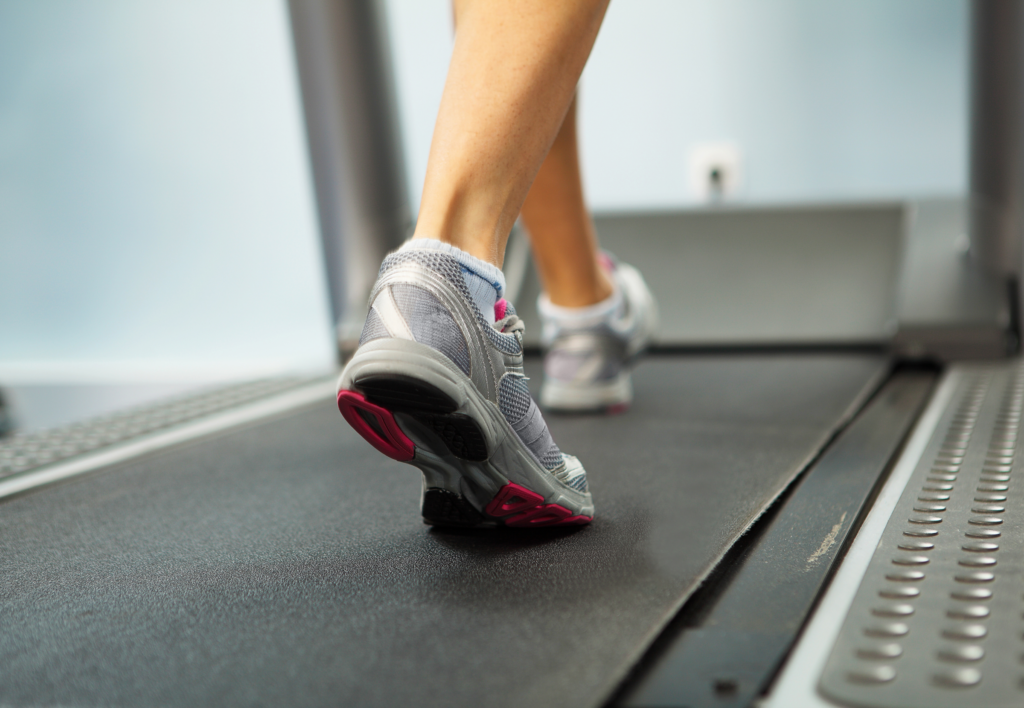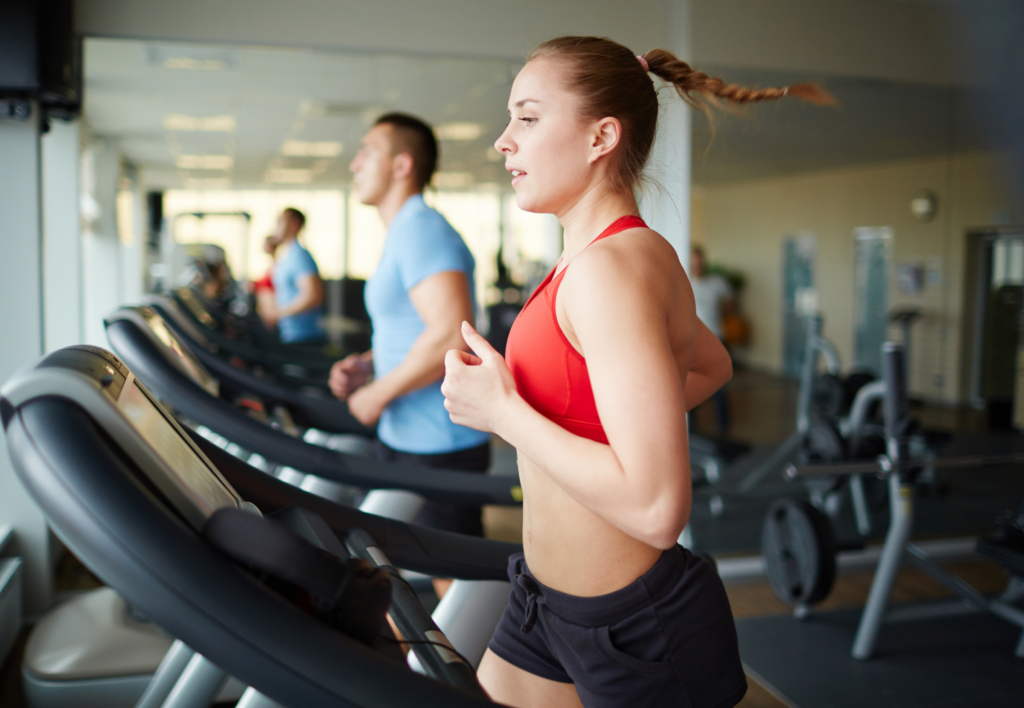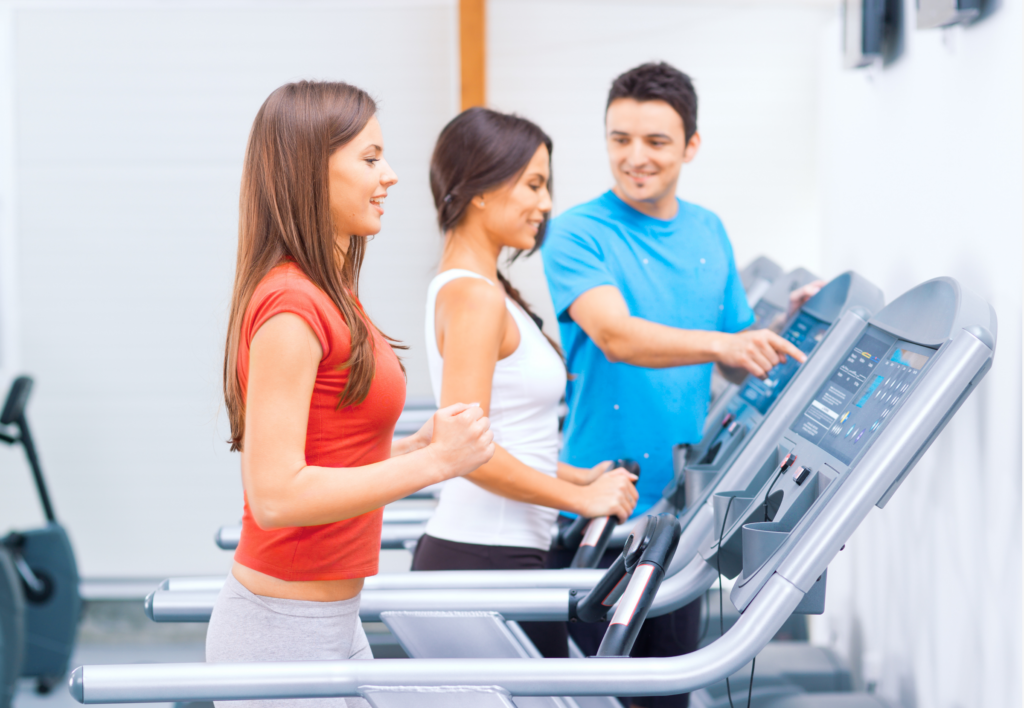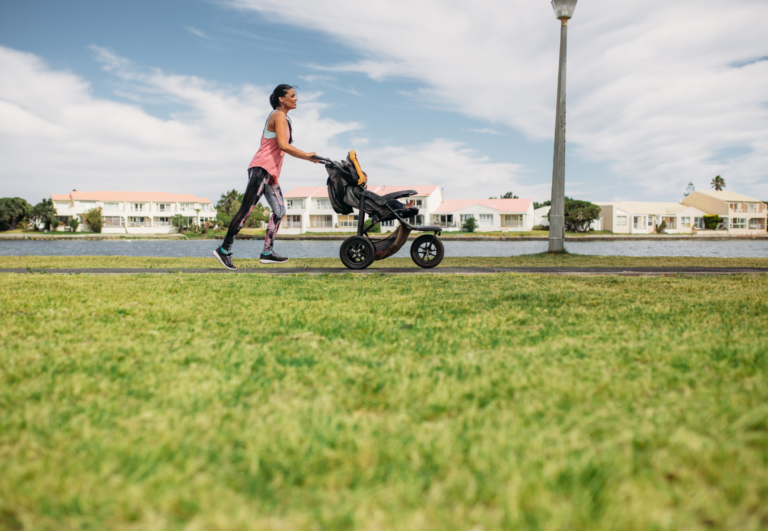How to Adapt Couch to 5K for the Treadmill (Specific Tips, Pros, and Cons!)
Embarking on a Couch to 5K program is a commendable way to leap from sedentary living to completing a 5K race.
As a UESCA certified running coach, I’ve guided numerous beginners on this journey, adapting the program for a treadmill which can be an excellent option for those seeking the convenience and controlled environment of indoor training. The key is to gradually increase your fitness level, allowing your body to adapt without the potential stressors of outdoor running.
The allure of the Couch to 5K program lies in its simplicity and structured approach that fits neatly into a busy lifestyle, making a healthy lifestyle achievable and enjoyable. It’s structured to gently introduce the body to the demands of running, with a mix of walking and running that progressively builds endurance. This method is especially beneficial for beginners, for whom the goal of running a 5K may initially seem daunting.
Transitioning through the weeks, my role is to ensure you remain injury-free by adjusting the intensity and recovery based on your unique fitness level. Consistency is key, and the treadmill provides a convenient platform to maintain regularity in your workouts.

The Best Couch to 5k Treadmill Training Plan and Schedule
The typical Couch to 5K running program is a structured training plan designed to help beginners go from a sedentary lifestyle to running a 5K (approximately 3.1 miles) over the course of about 9 weeks.
The program uses intervals of walking and running to gradually build up endurance and fitness.
Here’s a general outline of the progression:
Week 1:
- Workout 1: Run for 1 minute, walk for 1.5 minutes, repeat for 20 minutes.
- Workout 2: Same as Workout 1.
- Workout 3: Same as Workout 1.
Week 2:
- Workout 1: Run for 1.5 minutes, walk for 2 minutes, repeat for 20 minutes.
- Workout 2: Same as Workout 1.
- Workout 3: Same as Workout 1.
Week 3:
- Workout 1: Run for 1.5 minutes, walk for 1.5 minutes, then run for 3 minutes, walk for 3 minutes, repeat cycle.
- Workout 2: Same as Workout 1.
- Workout 3: Same as Workout 1.
Week 4:
- Workout 1: Run for 3 minutes, walk for 1.5 minutes, run for 5 minutes, walk for 2.5 minutes, repeat cycle.
- Workout 2: Same as Workout 1.
- Workout 3: Same as Workout 1.
Week 5:
- Workout 1: Run for 5 minutes, walk for 3 minutes, run for 5 minutes, walk for 3 minutes, run for 5 minutes.
- Workout 2: Run for 8 minutes, walk for 5 minutes, run for 8 minutes.
- Workout 3: Run for 20 minutes with no walking.
Week 6:
- Workout 1: Run for 5 minutes, walk for 3 minutes, run for 8 minutes, walk for 3 minutes, run for 5 minutes.
- Workout 2: Run for 10 minutes, walk for 3 minutes, run for 10 minutes.
- Workout 3: Run for 25 minutes with no walking.
Week 7:
- Workout 1: Run for 25 minutes.
- Workout 2: Run for 25 minutes.
- Workout 3: Run for 25 minutes.
Week 8:
- Workout 1: Run for 28 minutes.
- Workout 2: Run for 28 minutes.
- Workout 3: Run for 28 minutes.
Week 9:
- Workout 1: Run for 30 minutes.
- Workout 2: Run for 30 minutes.
- Workout 3: Run for 30 minutes.
Each workout is typically done three times per week on non-consecutive days to allow for recovery. As the weeks progress, the running intervals become longer and the walking breaks become shorter or are eliminated altogether, building up to the goal of running 5K without walking.

The Most Common Couch to 5k Program Variations
The Couch to 5K program has been adapted and modified by various coaches and organizations, leading to a number of common variations that cater to different fitness levels, preferences, and goals.
Here are some of the most common variations you might encounter:
- Pacing Variations: Some programs emphasize running at a comfortable pace without worrying about speed, while others may include intervals at different paces to help improve running efficiency and speed.
- Duration Variations: While the traditional Couch to 5K program is 9 weeks long, some variations extend the duration to 10 weeks or more to allow a more gradual progression, which can be beneficial for those who may need extra time to build up their endurance or are recovering from injury.
- Frequency Variations: The standard program suggests three workouts per week, but some variations may offer more flexibility with the number of weekly workouts or suggest active recovery days that include activities other than running.
- Cross-Training Inclusion: Some Couch to 5K plans incorporate cross-training days to help build overall fitness and reduce the risk of injury. These might include activities like cycling, swimming, or strength training.
- Run-Walk Strategy Variations: The traditional program uses a run-walk strategy to gradually increase running time. Variations might change the length of the run intervals or the walk intervals, sometimes offering a more personalized approach based on the runner’s current fitness level.
Sample Structure of the C25K Treadmill Plan
Week 1 to Week 9 Progression:
- Weeks 1-3: Start with intervals of running for 1 minute and walking for 1.5 minutes, repeating for a total of 20-30 minutes. This introduces running in manageable segments.
- Weeks 4-6: Gradually increase running intervals while decreasing walking breaks. For example, run for 5 minutes followed by a 2-minute walk.
- Weeks 7-9: Longer stretches of running, aiming to run for 20-30 minutes continuously by the end of week 9.
Remember to include rest days in your schedule to allow your body to recover. Typically, plan for running three days a week with rest days in between.

Sample Week Schedule (Week 4):
| Day | Activity |
|---|---|
| Monday | Run 5 min, Walk 2 min x4 |
| Tuesday | Rest |
| Wednesday | Run 6 min, Walk 2 min x3 |
| Thursday | Rest |
| Friday | Run 8 min, Walk 3 min x3 |
| Saturday | Rest |
| Sunday | Rest or light walk |
Tips for Adapting the Couch to 5K Program for the Treadmill
When adapting the Couch to 5K program for a treadmill, consider these tips to ensure a successful and enjoyable training experience:
- Use Incline to Simulate Outdoor Running: Set the treadmill to a 1% to 2% incline to better simulate the wind resistance you would encounter when running outside.
- Monitor Your Form: It’s easy to develop bad habits on a treadmill. Make sure to maintain good posture, with your head up and shoulders relaxed, and avoid leaning on the handrails.
- Vary Your Pace: Just like outdoor running, vary your pace during the running intervals. Use the treadmill’s speed settings to switch between walking and running, and to challenge yourself as you progress through the weeks.
- Stay Hydrated: Keep a water bottle within reach. It’s easy to underestimate how much you sweat on a treadmill since you’re not moving through the air which helps with cooling.
- Stay Engaged: Running on a treadmill can sometimes feel monotonous. Listen to music, watch TV, or try an audiobook to keep your mind engaged.
- Safety First: Always attach the safety clip to your clothing. If you slip or need to stop suddenly, the clip will stop the treadmill.
- Warm-Up and Cool-Down: Begin and end each session with a 5-minute walk to warm up and cool down, which is especially important to ease into and out of the exercise session.
- Track Progress: Many treadmills have built-in programs or displays that allow you to track your progress. Use these to monitor your distance, time, and heart rate.
- Be Consistent: Stick to the Couch to 5K schedule as closely as possible. Consistency is key to building endurance and reaching your 5K goal.
- Listen to Your Body: If you feel pain or excessive fatigue, it’s important to listen to your body and adjust the program as needed. This might mean repeating a week or taking an extra rest day.
Pros of Doing Couch to 5K on a Treadmill
- Controlled Environment: Treadmills allow you to train regardless of weather conditions, which is especially beneficial for those living in areas with extreme climates.
- Surface Consistency: The even, predictable surface of a treadmill can reduce the risk of tripping and falling, unlike uneven outdoor terrain.
- Pacing: Treadmills make it easy to set and maintain specific speeds, which can help with pacing, especially for beginners who are learning to manage their running tempo.
- Impact Reduction: Many treadmills have shock absorption systems, which can be gentler on the joints compared to running on hard outdoor surfaces.
- Safety and Convenience: Running indoors can be safer for those concerned about traffic, stray animals, or personal security, and it eliminates the need for reflective gear at night.
Cons of Doing Couch to 5K on a Treadmill
- Monotony: Treadmill running can be less stimulating and more monotonous compared to the changing scenery and varied environments of outdoor running.
- Less Challenge: Without natural wind resistance and varying inclines, the treadmill might not offer the same level of difficulty as outdoor running, potentially affecting the transition to outdoor races.
- Cost and Accessibility: Not everyone has easy access to a treadmill, and purchasing one can be a significant investment compared to the free access of running outside.
- Space Limitations: Treadmills require space, which can be a constraint for those with limited room in their homes.
- Different Muscle Engagement: Running on a treadmill can sometimes use slightly different muscles or muscle engagement patterns due to the moving belt and lack of forward propulsion needed compared to outdoor running.
Important Exercise Physiology Tips for Beginner Runners
As a UESCA certified running coach, I understand how the body responds and adapts to physical activity. This is essential when starting a new exercise regimen, such as a Couch to 5K treadmill program.
Importance of Body Mechanics
Body mechanics plays a pivotal role in running efficiently. Proper alignment of the joints and muscles minimizes the risk of injury and enhances performance. Here are key considerations for correct running form:
- Posture: Align your head, shoulders, and hips to maintain balance.
- Footstrike: Aim for a mid-foot strike to distribute impact forces evenly.
Incorporating dynamic stretching before running prepares the joints for motion and reduces stiffness.
Building Endurance and Strength
Endurance and strength are the cornerstones of a successful running program. To develop these, follow a structured approach that includes:
- Cardio: Gradually increase treadmill time to boost cardiovascular endurance.
- Strength Training: Engage in exercises that target key running muscles for improved power and injury prevention.
Here’s a simple table to illustrate a beginner-friendly weekly progression:
| Week | Cardio (Minutes) | Strength Training (Days) |
|---|---|---|
| 1 | 15 | 2 |
| 2 | 20 | 2 |
| 3 | 25 | 3 |
| … | … | … |
| 9 | 30 | 3 |
Remember, the transition from walking to running should be gradual to allow the body to adapt and to build up muscles and endurance without overburdening the joints.
Monitoring Progress and Staying Motivated
To assure consistent progress in your Couch to 5K treadmill adaptation and to remain motivated throughout the 8 weeks, it’s crucial to keep track of your advancements and celebrate your triumphs.
Tracking Improvements and Health Benefits
From my experience, observing tangible improvements in fitness levels can greatly enhance motivation. Here’s a practical method to monitor your progress:
- Weekly Milestones: Note the increase in running intervals versus walking breaks.
- Heart Rate Monitoring: Track your resting and active heart rate over time.
| Week | Running Time (minutes) | Walking Time (minutes) | Resting Heart Rate (bpm) | Active Heart Rate (bpm) |
|---|---|---|---|---|
| 1 | 5 | 25 | 80 | 140 |
| 2 | 8 | 22 | 78 | 138 |
| … | … | … | … | … |
| 8 | 30 | 0 | 65 | 120 |
Monitoring your heart rate can reflect an improving cardiovascular system and overall health.
Setting Realistic Goals and Celebrating Achievements
As a UESCA certified running coach, I advocate for setting specific and achievable goals.
Here’s how you should do it for the Couch to 5k:
- Start Small: Begin with manageable weekly targets, like reducing walking time by 2 minutes while increasing running time.
- Celebrate Small Wins: Achieving weekly targets warrants recognition—treat yourself with healthy rewards.
Staying healthy and fit is not just about your physical condition, but also about maintaining a state of mental wellness. By tracking your improvements and setting realistic, attainable goals, you cultivate motivation and a sense of accomplishment that fuels your journey from the couch to 5K on the treadmill.
Adapting to Challenges and Preventing Injury
Adapting a Couch to 5K program to the treadmill requires familiarity with the equipment and respect for the body’s limits to prevent injury.
To successfully adjust and keep injury at bay, consider the unique aspects of treadmill running and recovery strategies post-exercise.
Warm-Up and Cool Down Routines
Before starting the treadmill, it’s crucial to perform a warm-up to prepare the body for exercise and reduce the risk of injury.
- Walk at a moderate pace on the treadmill to gradually increase heart rate.
- Include dynamic stretches such as leg swings and arm circles to enhance range of motion.
After completing the day’s running session, a cool down helps in gradually reducing the heart rate and initiates the recovery process.
Cool Down (5-10 minutes):
- Slow down the running pace to a gentle walk.
- Finish the session with static stretches targeting major muscle groups such as calves, quads, and hamstrings.
In my coaching experience, incorporating consistent warm-up and cool down routines is as essential as following the running plan itself. This ensures a safe and effective journey from the couch to running a 5K on the treadmill.
Treadmill-Specific Tips for Safe Running
Treadmill running presents unique challenges, but with the right approach, you can mitigate risks and increase the comfort and effectiveness of your workouts. Here’s how:
- Know Your Treadmill: Familiarize yourself with the treadmill’s functions, especially the emergency stop button.
- Cushioning: Treadmills offer more cushioning compared to running on asphalt, which is beneficial for injury prevention. Ensure yours provides adequate shock-absorption to reduce impact on joints.
- Walk Breaks: Integrate walk breaks into your training to allow your body time to adjust to the new stimulus, especially during the early weeks of training.
- Winter Concerns: When transitioning to indoor training during winter, maintain a comfortable environment—avoid overheating by ensuring good air circulation.
Injury Prevention and Recovery
Injuries can set you back, but with careful planning, they can often be prevented. Recovery is equally critical to ensure continued progress without setbacks. Implement these practices:
- Rest Days: Prioritize rest days in your training plan to allow for muscle recovery and prevent overuse injuries.
- Listening to My Body: Pay attention to any discomfort, and don’t ignore pain—a sign to rest or adjust your training.
- Post-Run Recovery Routines: After running, engage in cool-down exercises and consider using a foam roller to aid in muscle recovery.
- Safety Measures: Always warm up before starting a workout and cool down afterwards to maintain flexibility and prevent strains.




